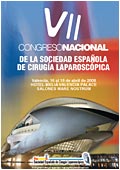METHODS
We performed a retrospective study of the first consecutive 184 RoLRP performed in our hospital between February 2003 and December 2005. The operations were performed by two surgeons using the daVinci robot with three robot arms.
Approximately 50 cases of conventional laparoscopic radical prostatectomy were performed by one of the two surgeons prior to using the robotic assistance. Both surgeons have extensive experience in the field of open radical retropubic prostatectomy.
The patient is placed in a dorsal lithotomy position with the lower limbs in slight abduction allowing the surgical cart to be wheeled in position between the legs. A Veress needle is placed in the left hypochonder and the abdomen is insufflated to 12mm of mercury. A 12mm camera port, two 9mm robot ports, two 5mm ports and a supplementary 12mm port is placed in a semi-circular pattern. The patient is placed in Trendelenburg position and the ports are then connected to the robot arms.
The next steps are performed in chronological order: 1. Horseshoe-shaped opening of the peritoneum starting on either side of the medial umbilical ligaments, mobilisation of the bladder and creation of the extraperitoneal space; 2. Pelvic lymphadenectomy (if necessary); 3. Incision of the endopelvic fascia and exposure of the apex of the prostate, ligation and control of the dorsal vein complex; 4. Bladder neck transection, posterior dissection with freeing both seminal vesicals; 5. Control of the lateral pedicles and preservation of the neurovascular bundles in an interfascial fashion where indicated; 6. Incision of the dorsal venous complex, freeing all periurethral tissue circular to gain urethral length and cutting the urethra few millimetres away from the apex; 7. Specimen entrapment and urethrovesical anastomosis after indwelling a 18 ch. bladder catheter; 8. The specimen is extracted through a small supraumbilical midline incision.
A patient was considered continent if he used no liner or just one safety liner for protection against the occasional loss of a few drops of urine. A patient was considered potent if he was able to perform sexual intercourse (with or without the use of a PDE-5 inhibitor).
The ‘Stanford procedure’was used to sample the prostatectomy specimen [8].





